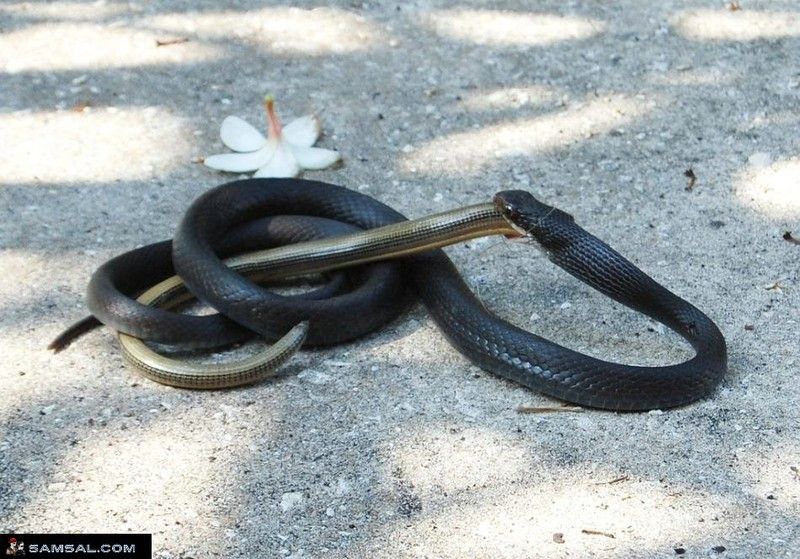|
|
Snake Eats Snake
|
After eating, snakes become dormant while the process of digestion takes place. Digestion is an intense activity, especially after consumption of large prey. In species that feed only sporadically, the entire intestine enters a reduced state between meals to conserve energy. The digestive system is then 'up-regulated' to full capacity within 48 hours of prey consumption. Being ectothermic (“cold-blooded”), the surrounding temperature plays a large role in snake digestion. The ideal temperature for snakes to digest is 30 °C (86 °F). So much metabolic energy is involved in a snake's digestion that in the Mexican rattlesnake (Crotalus durissus), surface body temperature increases by as much as 1.2 °C (2.2 °F) during the digestive process. Because of this, a snake disturbed after having eaten recently will often regurgitate its prey to be able to escape the perceived threat. When undisturbed, the digestive process is highly efficient, with the snake's digestive enzymes dissolving and absorbing everything but the prey's hair (or feathers) and claws, which are excreted along with waste.
Locomotion
The lack of limbs does not impede the movement of snakes. They have developed several different modes of locomotion to deal with particular environments. Unlike the gaits of limbed animals, which form a continuum, each mode of snake locomotion is discrete and distinct from the others; transitions between modes are abrupt.
|
|









